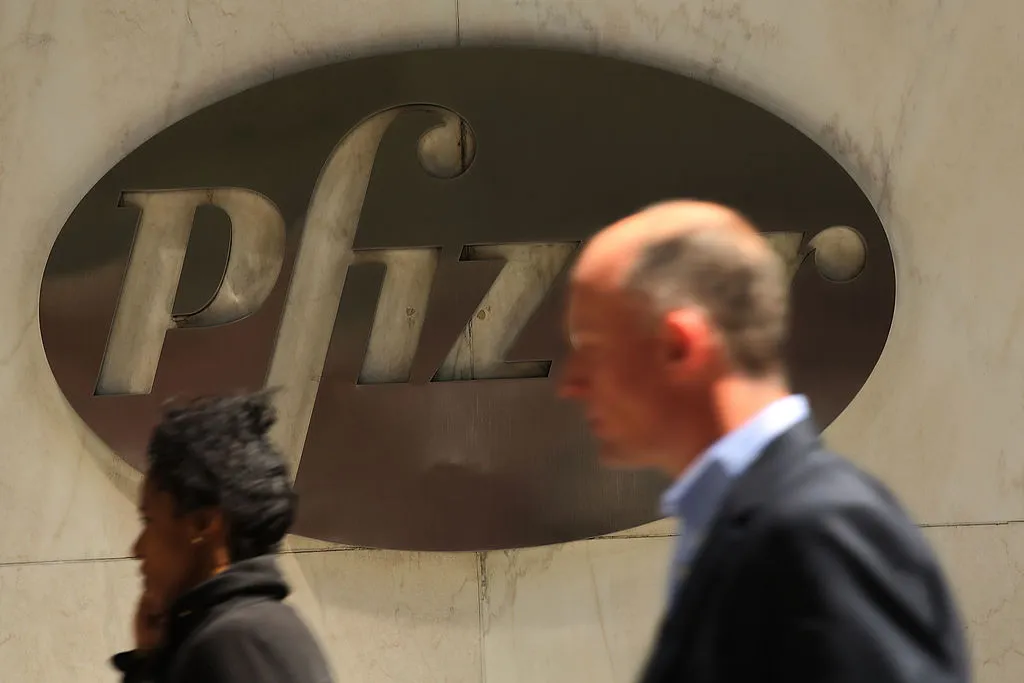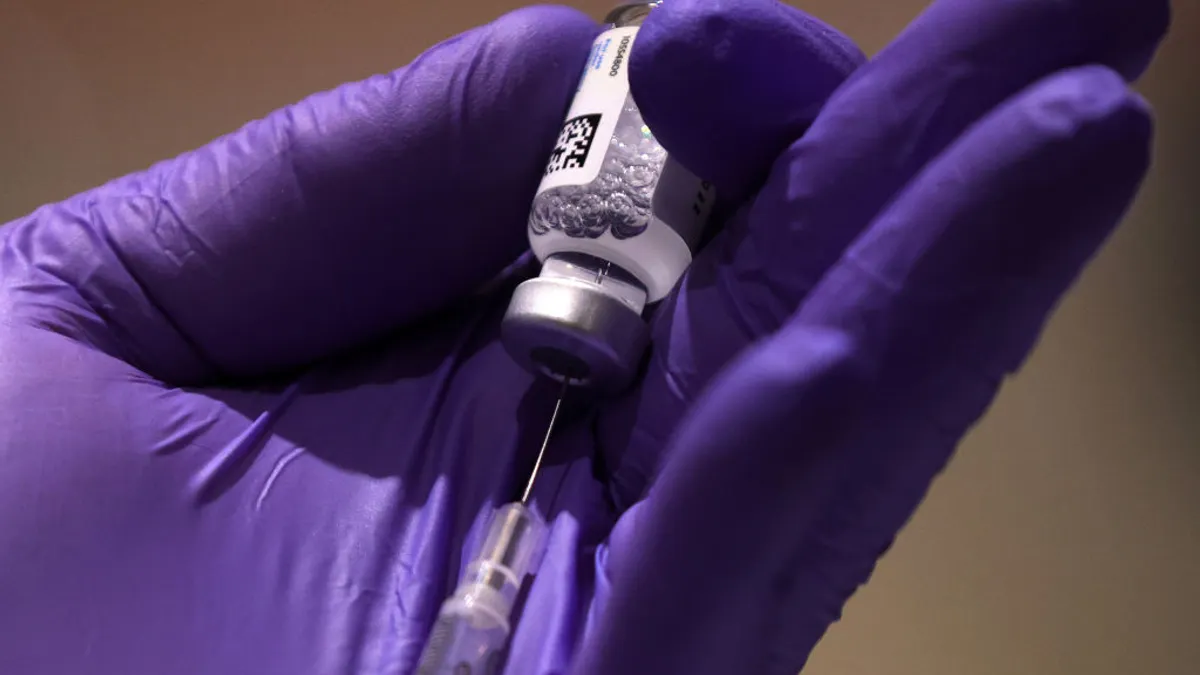Vlad Coric hasn’t always played by pharma’s rules — but that’s not to suggest the CEO of Biohaven hasn’t notched plenty of successes in the biz. Recently, in fact, Coric steered the company through a $11.6 billion acquisition by Pfizer, which picked up its blockbuster migraine med, Nurtec.
Throughout his career, Coric has eschewed some of the mainstay business strategies of the industry. And from the start, Biohaven, which launched in 2013 and grew out of Coric’s research in neuroscience, went against the grain.
‘'Everyone is leaving neuroscience. What makes you think you can survive here?’” he recalled people asking. “But our whole team has lived and breathed this, and (we) proved we can do this.”
After Nurtec won approval in 2020 and pulled in $462 million in sales in 2021 — a 600% jump over the previous year — Coric also resisted temptation to adopt a hellbent focus on growth. Although Biohaven could have ridden a revenue wave from Nurtec to help fuel an expansion into a larger commercial enterprise, that’s not what Coric wanted.
“If you’re in Big Pharma, it’s about: What kind of office do you have? How many direct reports? That’s how you know if you’re important,” he said. “That’s not how we are at Biohaven.”
While Coric acknowledged that the industry needs the “Pfizers of the world” to help drugs reach more patients, he believes Biohaven has a different role to play and should remain a smaller, more nimble and patient-driven enterprise.
"We want to do for patients with conditions like OCD and epilepsy what we did for those with migraines.”

Vlad Coric
CEO, Biohaven
“There is something healthy about having your feet to the fire. We want to live in this innovation space,” he explained. “It’s also a little scary. When we had Nurtec, we didn’t have to rely on financing. But this is who we are. We want to be an innovative, entrepreneurial engine.”
On Oct. 4, the company officially rebooted without Nurtec and its CGRP portfolio. Now that Biohaven is back to the brass tacks of clinical work with leading candidates for OCD and epilepsy, the question is: Can Coric and the company pull off another big win?
Primed for neuroscience
Coric grew up uniquely positioned to thrive in neuroscience drug development.
“My dad was a psychiatrist and my mom was a pharmacist,” he explained. “From a young age, I was interested in the biology of behaviors.”
Coric eventually followed in his father’s footsteps and became a psychiatrist treating a range of conditions, from OCD to bipolar disorder. He also saw that when it came to pharmaceutical treatments, there was little innovation.
“Treatments are resistant to patients. (Patients) are not treatment resistant. We didn’t understand (these diseases) and we failed them,” he said.
He’s long been an assistant professor at Yale, where he conducted R&D through the Clinical Neuroscience Research Unit. But to learn the ropes of drug development, Coric eventually realized he’d have to make the leap from academia to industry, so he took a job at Bristol Myers Squibb where he worked in numerous therapeutic areas.
He also helped bring immuno-oncology to the front lines with treatments such as Yervoy and Opdivo. Still, with the industry buzzing over these breakthroughs, Coric couldn’t stop thinking about the unfinished work in neuroscience.

“It gnawed at me thinking, ‘Where are these neuroscience treatments going to come from if all of these pharma companies aren’t focused on it?’” he recalled.
The upside was that with so many large pharmas fleeing neuroscience, scores of skilled scientists were on the hunt for a new job, and Coric also recognized there was a unique opportunity to bring together some of the best minds in the field. After building a “dream team” of leading CNS drug developers, Biohaven roared to life with Coric at the helm.
A ‘fast follower’ approach
Biohaven originally focused on Coric’s research at Yale into glutamate modulators and developed a drug called troriluzole, which is now in late-stage trials for OCD and spinocerebellar ataxia (SCA), a group of rare neurodegenerative diseases with no approved treatments.
Yet, as Biohaven advanced a risky, potential first-in-class therapy, Coric recognized that being a “fast follower” with other emerging mechanisms could add safer bets to its portfolio. After seeing AbbVie’s success with a CGRP agent in migraines, Biohaven pounced with a similar compound of its own that it believed would work better. Despite AbbVie’s 18 month head start, Biohaven caught up with its CGRP contender which proved to be a more effective as an acute and preventative treatment. Nurtec now dominates the CGRP migraine market and is growing toward projected peak sales of $6 billion a year, Coric said.
The company leveraged the same strategy with its portfolio of Kv7 agents for epilepsy, and other CNS and pain disorders. Although Xenon Pharmaceuticals originally advanced Kv7 drugs, which work by targeting potassium channels to make different parts of the brain less hyperactive, Coric said Biohaven has improved on the approach with candidates that could be more effective and have fewer side effects.
This method of pipeline diversification has also helped Biohaven weather tough losses.
In September, the company announced that one of its novel candidates, verdiperstat, flunked a trial in ALS. And earlier in the year, troriluzole failed to hit its primary efficacy endpoint in a phase 3 trial for the overall SCA population. Coric said the data showed troriluzole was effective in patients with a specific genotype, and the company is working on next steps for the therapy with the FDA.
“This is what working in neuroscience is like,” he said. “But your successes are going to help fund your failures.”
New paradigms in business
Among Coric’s unique moves in pharma was the deal with Pfizer — one of the industry’s biggest last year. Rather than buying Biohaven outright or targeting a single asset, Pfizer acquired Biohaven’s CGRP portfolio, and spun out Biohaven into a new company that it owns a small percentage of. Coric said his team pitched the arrangement, which would protect its carefully built drug development team from being broken apart, and Pfizer was receptive.
“Albert (Bourla) called and said, ‘We want you to keep contributing to neuroscience and if you’re successful in the future, that would be awesome,” Coric said. “Now I’m hearing from a lot of people in the field that other companies are asking for this kind of deal.”
When coming up with the uncommon structure of the deal, Coric said his deep experience in R&D played a part, and noted that business leaders should bring the same curiosity and skepticism they bring into the lab to the boardroom.
“You have to ask: Why are we making certain decisions? What we’re doing should be questioned,” he explained. “I try to innovate not just the science but also the business practices. That’s how we improve all aspects of companies.”
Of course, Biohaven is still heavily focused on the science. For Coric, who still sees patients as a psychiatrist, the aim is not to make incremental improvements, but innovate paradigm-changing treatments. With two phase 3 trials of troriluzole in OCD underway, Coric is hopeful the company is close to delivering on that front soon.
“If you’re not one of the third of OCD patients who responds to SSRIs, there aren’t really any other options … except neurosurgery,” he said. “We’d like to get more patients back to their normal function. We think that’ll be the case with troriluzole in OCD. We want to do for patients with conditions like OCD and epilepsy what we did for those with migraines.”



















